Know what's growing
While we know you’re eager to get rid of them, it’s also good to know what’s in the water around you. Here are the most common aquatic weeds and plants found in marineways around New Jersey, Pennsylvania—and beyond.
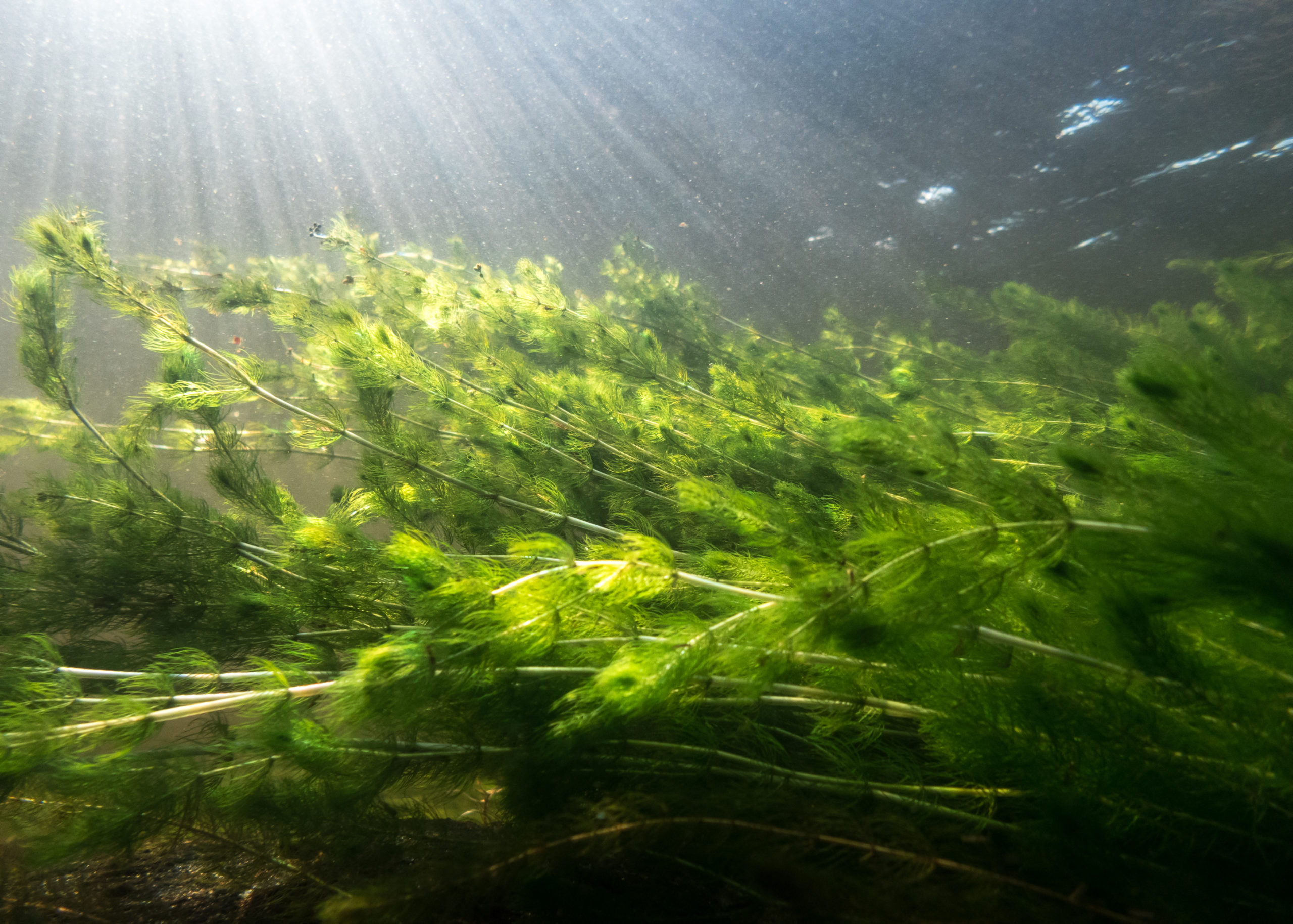
Eurasian Watermilfoil
The most common invasive plant in the U.S., Eurasian Watermilfoil is a fast-spreading weed that thrives in cool water and is primarily spread by boats. It grows in large, floating mats that shade out native plants. Stems grow between 3-12 feet, but can reach up to 32 feet if left to grow wild!

Tapegrass
Native to North America, tapegrass, also known as wild celery or eel-grass, is a submersed plant that looks like grass. Leaves can grow up to six feet long and although it provides a valuable refuge for wildlife, like ducks, it can grow into dense mats on the water’s surface.
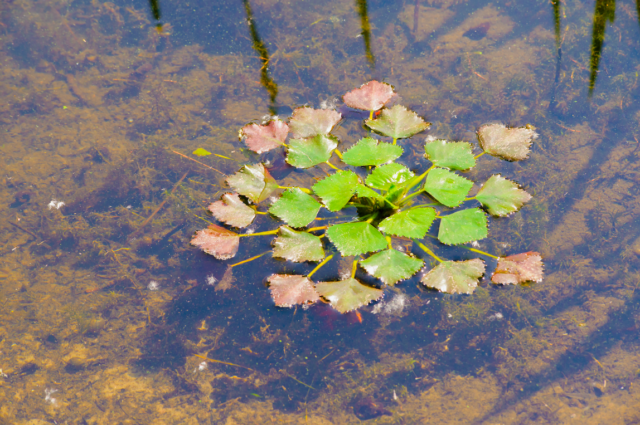
Water chestnut
An aggressive, invasive aquatic plant, water chestnut is native to Europe and Asia and grows rapidly in shallow, slow-moving water. Water chestnut suppresses native plants, clogs the water, and encumbers birds and plants as they pursue prey. Swimmers, boaters, and anglers are also hindered by the floating weed.
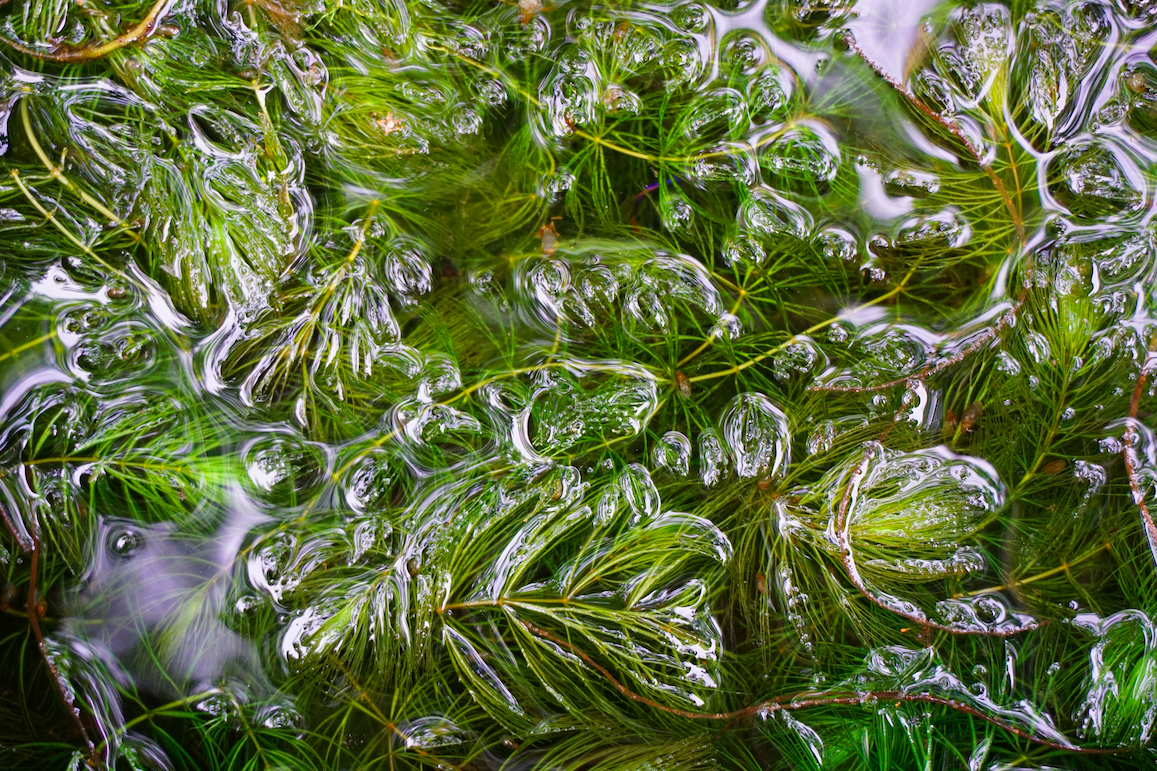
Hydrilla
Also known as water thyme, hydrilla is a submerged perennial herb with long stems that can grow up to 25 feet in length and leaves that form dense mats on the water’s surface. Along with obstructing boating, swimming, and fishing, hydrilla cuts off oxygen to fish and in severe infestations, can block intakes at water treatment, power generation, and industrial facilities.
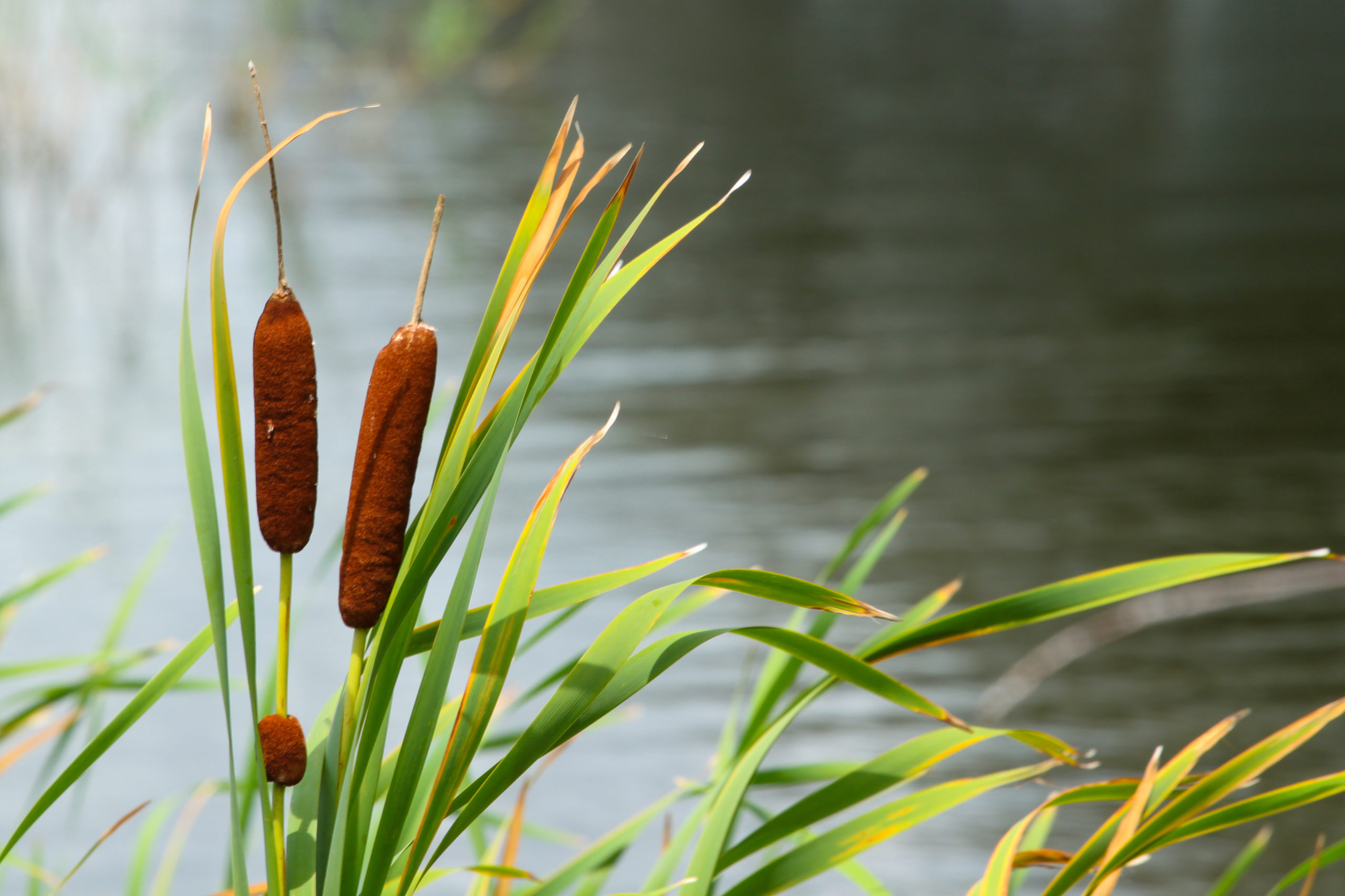
Cattails
Cattails are a wetland plant that grow and spread rapidly, with massive root systems. They thrive in shallow, flooded conditions and with thick foliage, they make it difficult for other species to grow yet they are a perfect habitat for small fish and aquatic creatures. Cattails can be difficult to cultivate and are most easily harvested by cutting them below the surface.
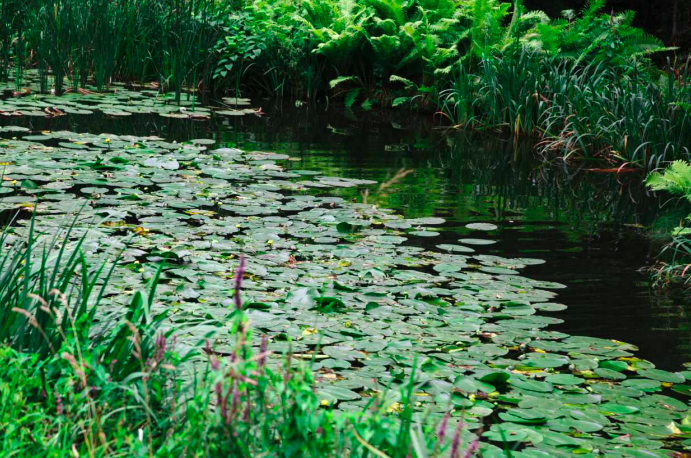
Lily pads
Native to the US, lily pads are perennial aquatic plants that grow in lakes, ponds, slow-moving streams, canals, ditches, and tidal reaches of freshwater streams. Lily pads are a habitat for fish and wildlife, by providing food, shelter, and a breeding place. While not considered an invasive species, they can grow and reproduce rapidly if not managed—and can interfere with boating and recreational activities.
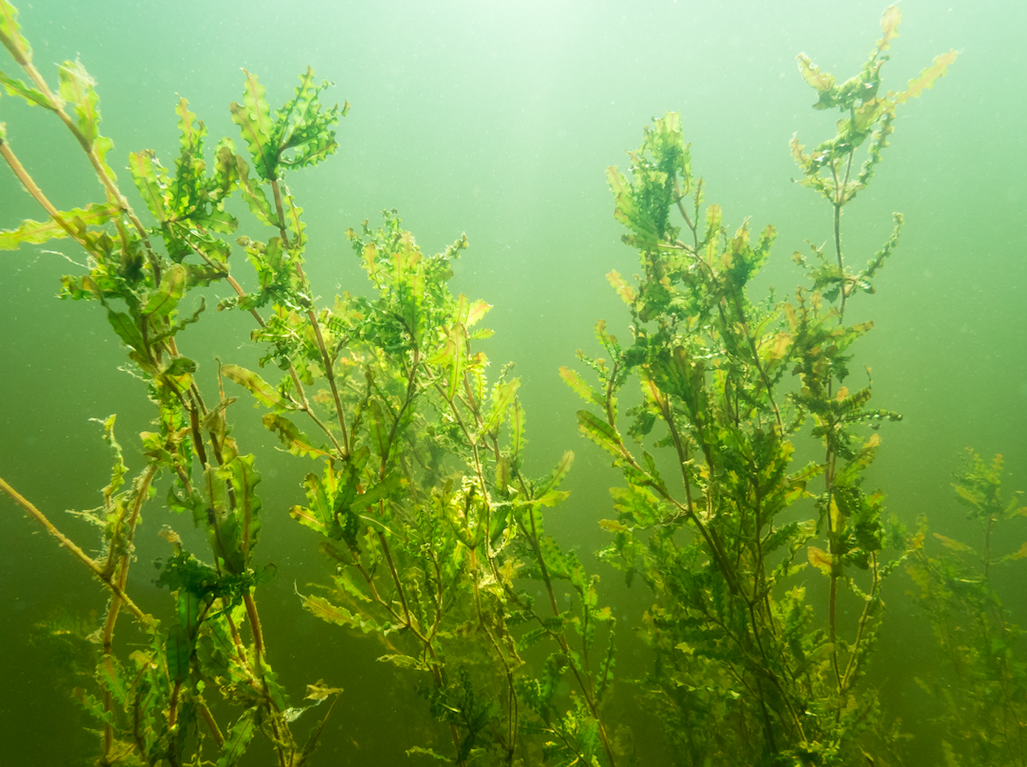
Curly-leaf pondweed
When the ice starts melting in March or early April, pondweed starts growing in shallow areas, near the shore. Curly-leaf pondweed is an invasive, exotic submersed plant that can be identified by its curly and wave-like leaves.

Broad-leaved pondweed
This native weed has large curved, submersed leaves and is a desirable species, when contained. It tends to grow in static or slow-moving water, up to 3 feet in depth, and cannot grow in the shade.
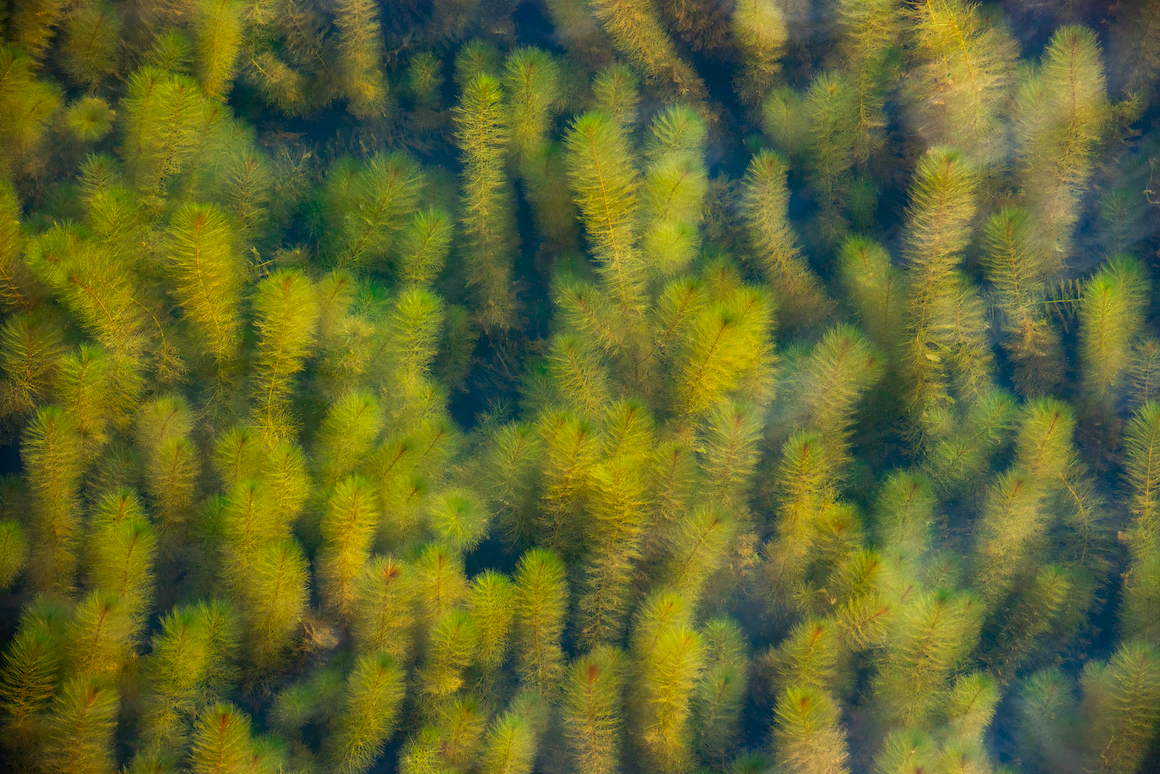
Coontail
Named for its racoon tail appearance, this is a rootless native submersed plant that has finely-divided leaves and long, trailing stems. While it can become dense, coontails are an effective nutrient filter and provide a good habitat for wildlife. They are harvested when growing among strands of Eurasian watermilfoil.
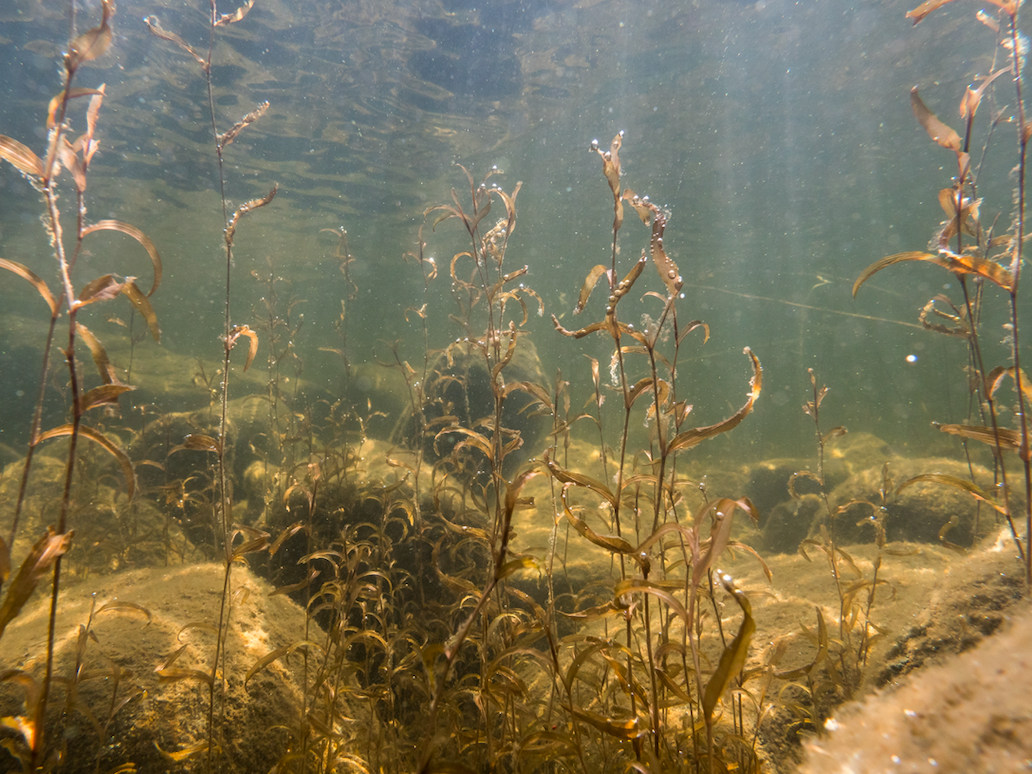
Narrow-leaved pondweeds
With narrow, slender leaves, these weeds are a good habitat for invertebrates and fish. These pondweeds grow below the water’s surface and are firmly rooted—they can grow up to 10-feet tall and can be found in all sediment types but thrive in sand. Narrow-leaf pondweeds usually do not reach the surface or have floating weeds, but some types do reach the surface and flower.
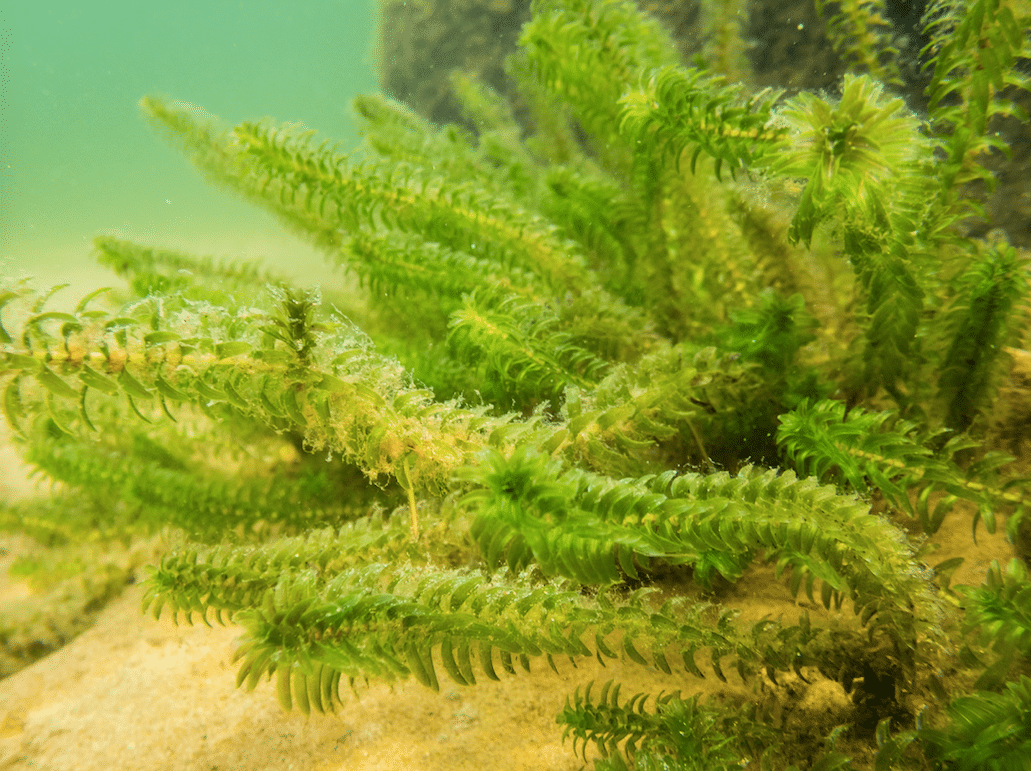
Common waterweed
A native submersed plant with small leaves that are attached directly to the stem of the plant. Waterweeds tend to bunch together to create dense mats under the surface of the water. They reproduce and spread mostly by the fragmentation of the stem rather than by seed.
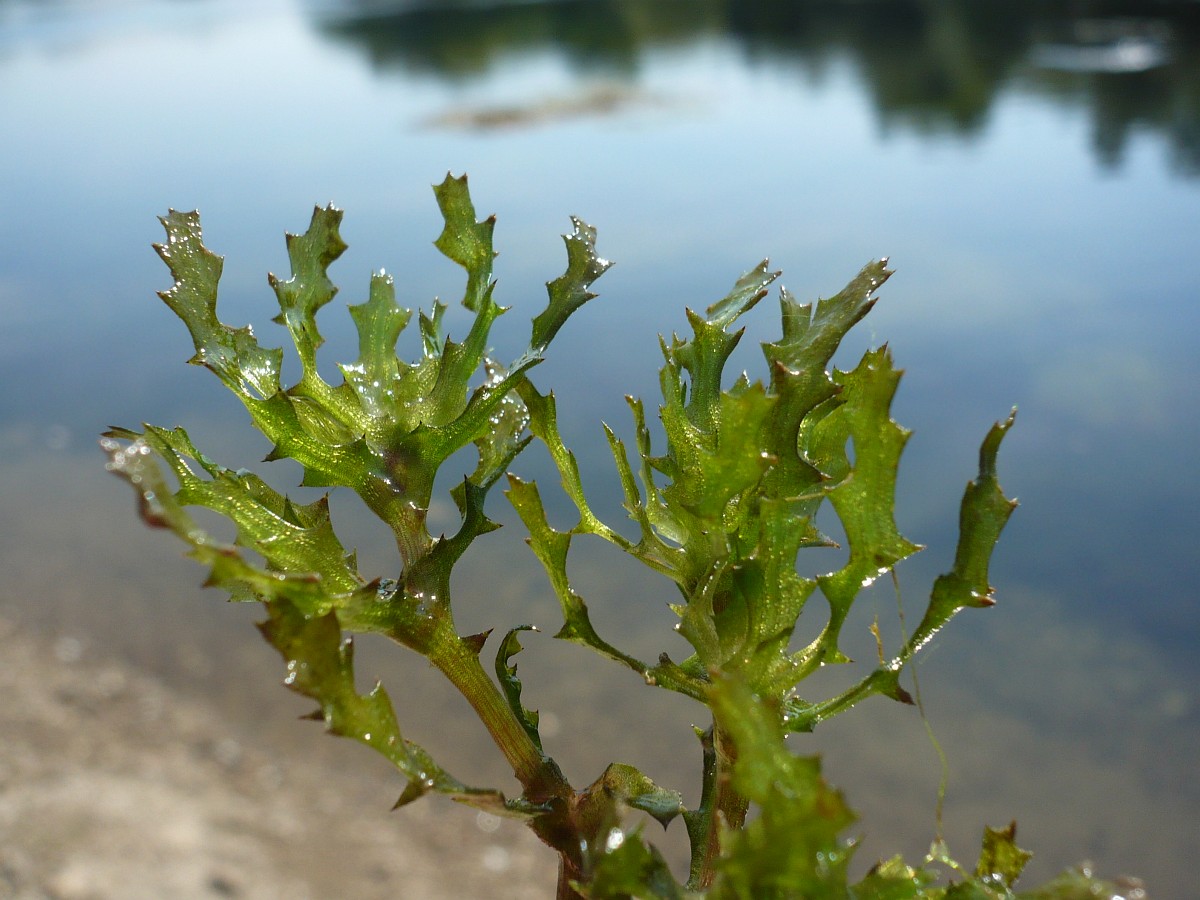
Naiads
Naiads often grow alongside tapegrass. They are native submersed plants that have fine flexible stems that often branch. Naiads are a food source for waterfowl, and can become overgrown in mid-to-late summer.
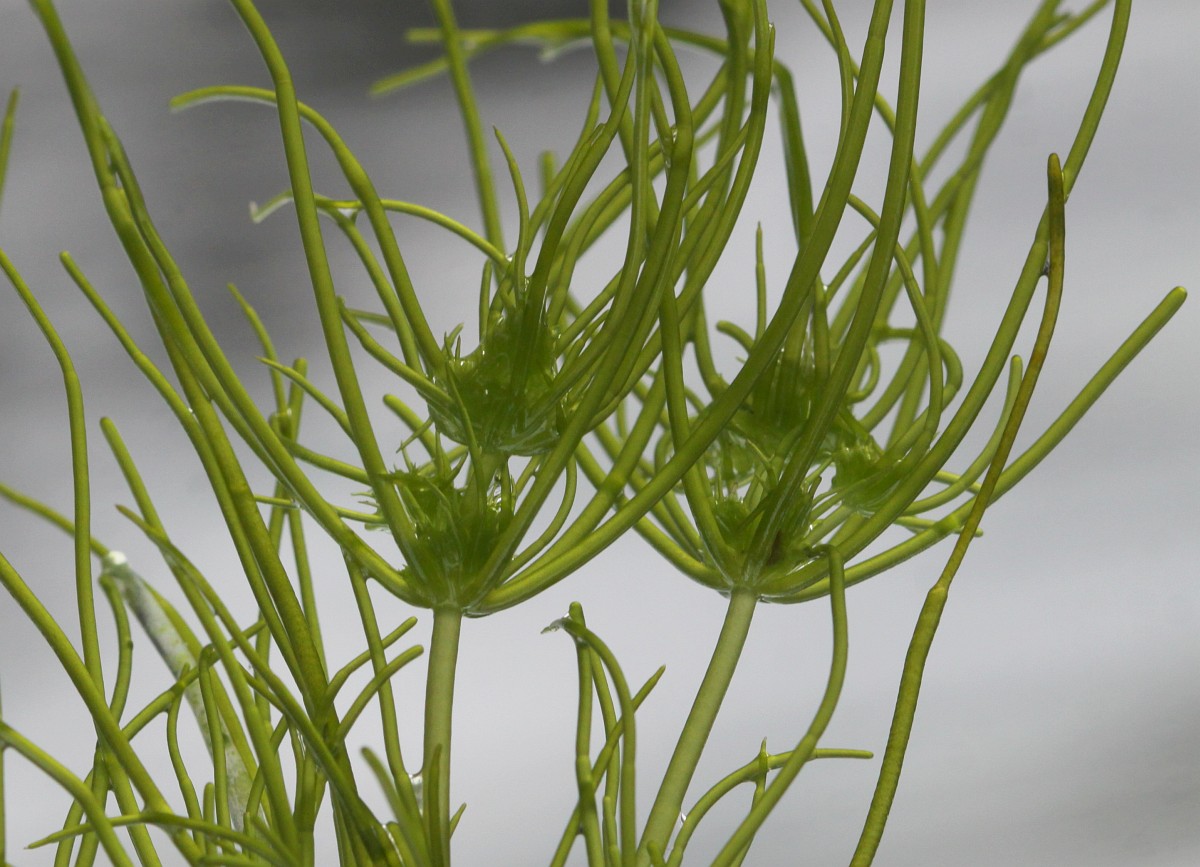
Stoneworts
This aquatic weed tends to grow in cleaner waters, along the bottom of lakes and ponds. A macroalga, stoneworts is a habitat for small aquatic animals and a food source for waterfowls. Stoneworts are easily out-competed by invasive plants.
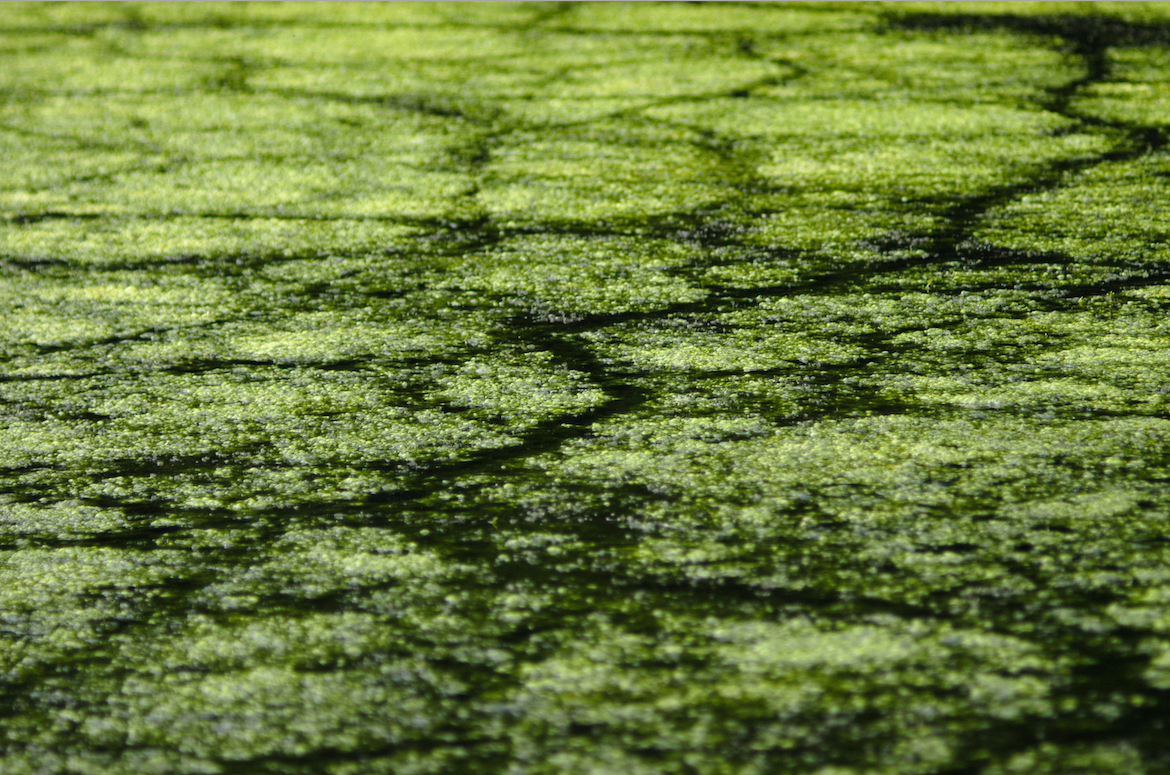
Dark, benthic mat algae
This algae grows in moderately deep waters with low amounts of sunlight. In rare cases, and in specific conditions, it can be transported to the surface and produce surface mats that are usually dark blue to black. Benthic mats may float to the surface due to trapped gases and may oxidize, causing them to turn yellow-orange.
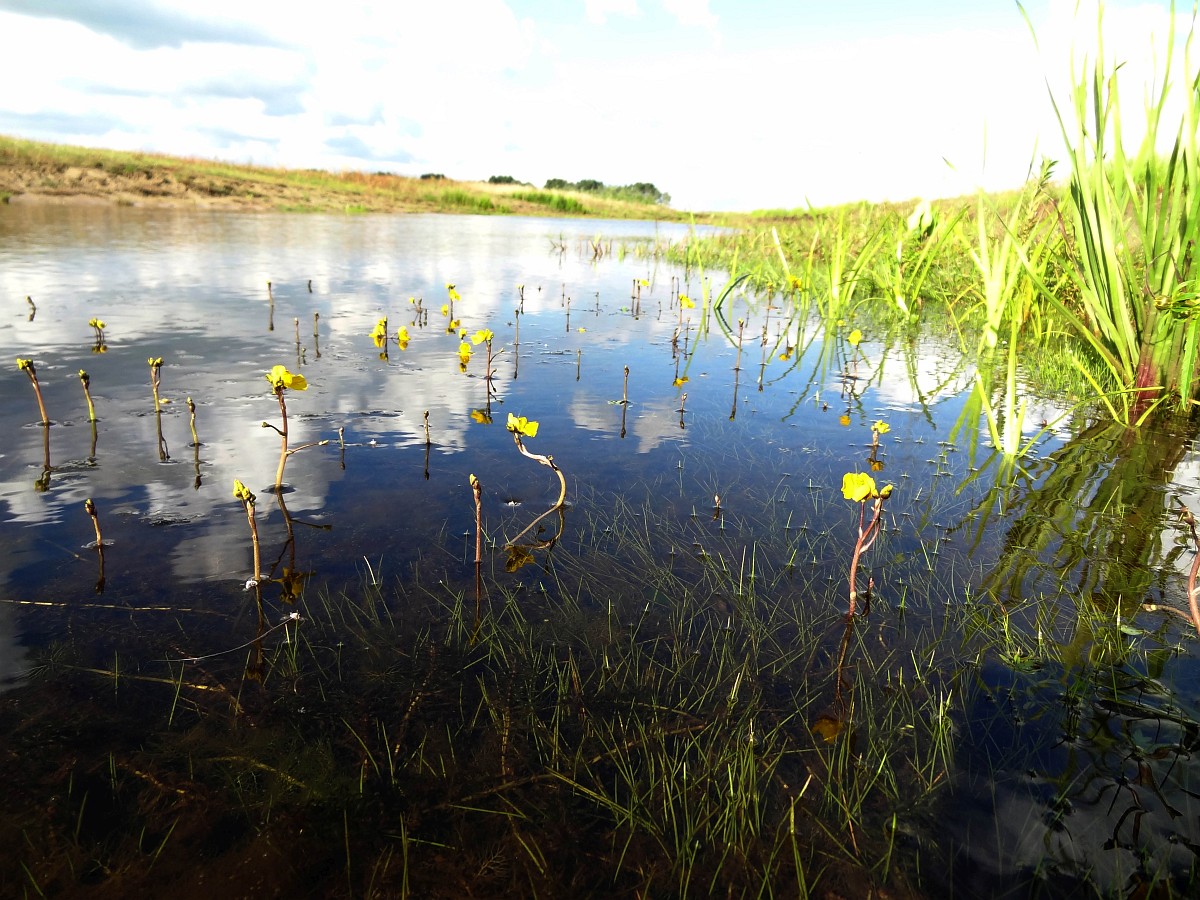
Bladderwort
This is a small plant that grows along the sediments in still water areas. It has bladders that are used to capture small aquatic animals. Common bladderwort is a native species, known to grow in fifty of the United States. A rootless plant, it grows in dense mats that limit water circulation, invade vegetation, and may cause odors to develop in the aquatic ecosystem.


